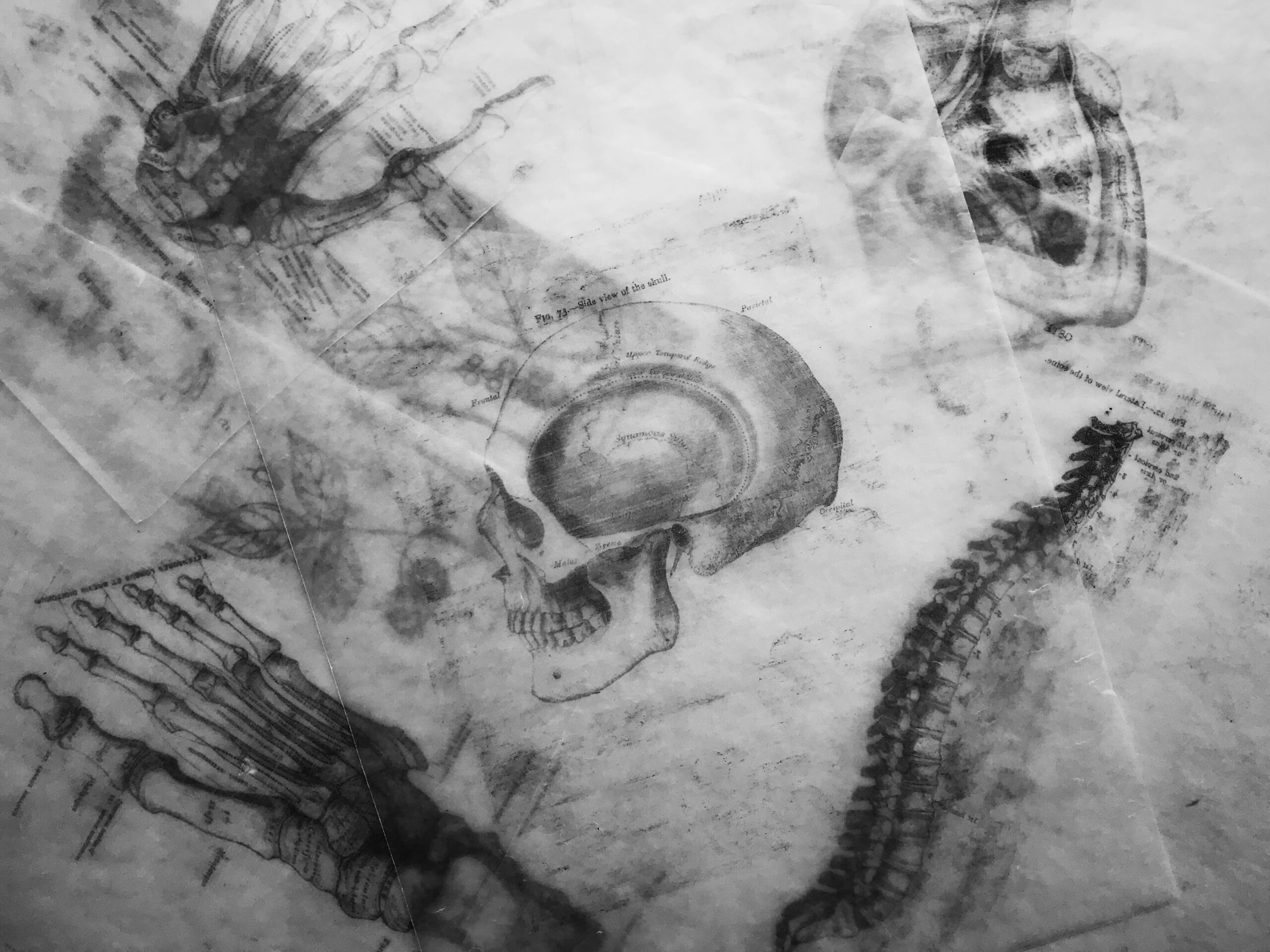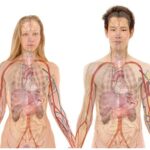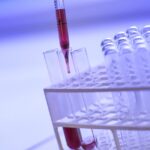The Need for Anatomy and Physiology in Education: Understanding Its Importance

In educational curricula, anatomy and physiology are foundational subjects that provide in-depth insights into the human body. While these terms are often mentioned together, they represent distinct areas of study. Anatomy is the branch of science concerned with the physical structure of organisms, including humans. It involves examining the various systems, organs, and tissues that make up an organism, often through dissection and imaging techniques. For instance, understanding the skeletal system, muscles, and internal organs falls under the domain of anatomy.
On the other hand, physiology delves into how these anatomical structures function. It explores the biochemical, mechanical, and physical processes that enable living beings to sustain life. This includes studying how organs and systems work individually and collectively to maintain homeostasis, respond to environmental changes, and perform essential bodily functions. Physiology covers a wide range of topics, from the electrical impulses that control heartbeats to the complex hormonal interactions that regulate metabolism.
The interplay between anatomy and physiology is crucial for a comprehensive understanding of the human body. While anatomy provides the blueprint, physiology explains the mechanisms that bring this blueprint to life. For students, grasping these concepts is essential as they form the basis for advanced studies in fields such as medicine, biology, and health sciences. By studying anatomy and physiology, learners gain a holistic view of how the body is structured and how it operates, which is fundamental for diagnosing and treating medical conditions, developing new healthcare technologies, and advancing scientific research.
Thus, the inclusion of anatomy and physiology in educational curricula is not just important but indispensable. These subjects equip students with the knowledge and skills needed to navigate complex biological systems, fostering a deeper appreciation for the intricacies of life. As we move forward, the significance of understanding anatomy and physiology becomes ever more apparent in cultivating a well-rounded and informed society.
Historical Perspectives on Anatomy and Physiology
The study of anatomy and physiology has a rich historical tapestry that traces back to ancient civilizations, where the foundational understanding of the human body began to take shape. These disciplines were initially intertwined with philosophy and medicine, reflecting the early attempts to comprehend the complexities of human biology.
One of the earliest significant figures in the history of anatomy is Hippocrates, often referred to as the “Father of Medicine.” Active around the 5th century BCE, Hippocrates advocated for systematic observation and documentation of clinical cases, thereby laying the groundwork for the scientific study of human anatomy. His emphasis on natural causes rather than supernatural explanations marked a pivotal shift in medical thought.
Galen of Pergamon, a prominent physician in the Roman Empire during the 2nd century CE, further advanced anatomical knowledge through his extensive writings and dissections. Although some of Galen’s theories were later proven incorrect, his work remained influential for over a millennium. His anatomical texts, based on animal dissections, were widely used in medical education throughout the Middle Ages.
The Renaissance period heralded a groundbreaking transformation in the study of anatomy and physiology. Andreas Vesalius, a 16th-century Flemish anatomist, published “De Humani Corporis Fabrica,” a seminal work that corrected many of Galen’s errors and provided detailed, accurate illustrations of the human body. Vesalius’ insistence on hands-on dissection and empirical observation revolutionized anatomical science.
Another pivotal figure, William Harvey, made monumental contributions in the 17th century by elucidating the circulatory system. His work “De Motu Cordis” described the systemic circulation of blood and the role of the heart as a pump, fundamentally altering the understanding of human physiology.
These historical milestones underscore the evolution of anatomy and physiology from rudimentary observations to sophisticated scientific disciplines. The contributions of figures like Hippocrates, Galen, Vesalius, and Harvey have shaped modern medicine, highlighting the enduring importance of these fields in education and healthcare. Understanding this historical context enriches our appreciation of anatomy and physiology’s role in contemporary science and medicine.
The Role of Anatomy and Physiology in Health Sciences
An in-depth understanding of anatomy and physiology is indispensable for professionals in the health sciences. These disciplines form the cornerstone of medical knowledge, enabling practitioners to diagnose and treat various illnesses effectively. For instance, physicians rely on a comprehensive grasp of human anatomy to identify abnormalities and understand the intricacies of different body systems. Similarly, a profound knowledge of physiology allows them to comprehend how these systems function and interact, which is vital for interpreting symptoms and prescribing appropriate treatments.
Nurses and allied health professionals also benefit significantly from a solid grounding in anatomy and physiology. In nursing, for example, a clear understanding of the human body is essential for patient assessment, monitoring vital signs, and administering medications. Knowledge of physiological processes helps nurses anticipate patient needs, manage care plans, and respond to emergencies efficiently. For allied health professionals such as radiographers, physiotherapists, and occupational therapists, anatomy and physiology provide the necessary framework for conducting imaging procedures, designing rehabilitation programs, and assisting patients in regaining functional abilities.
Moreover, these foundational subjects are pivotal in performing medical procedures. Surgeons, for example, must have precise anatomical knowledge to navigate complex surgical sites and avoid critical structures. Anesthesiologists require an understanding of physiology to manage patients’ respiratory and cardiovascular systems during surgeries. From routine check-ups to complex operations, the principles of anatomy and physiology underpin every aspect of healthcare delivery, ensuring that interventions are both safe and effective.
Patient care is another domain where anatomy and physiology play a critical role. Healthcare professionals utilize their knowledge to educate patients about their conditions, the rationale behind treatment plans, and the importance of preventive measures. This education empowers patients to make informed decisions about their health and fosters a collaborative approach to treatment.
In summary, the role of anatomy and physiology in health sciences cannot be overstated. These subjects are integral to the education and practice of healthcare professionals, forming the foundation for competent, compassionate, and effective patient care.“`html
Anatomy and Physiology in High School and Pre-College Education
The inclusion of anatomy and physiology in high school curricula plays a pivotal role in shaping students’ academic and professional trajectories. Early exposure to these subjects can ignite a passion for health-related careers, providing students with a robust foundation for future studies in medical, biological, and health sciences. By understanding the complex structures and functions of the human body, students gain essential insights that prepare them for advanced coursework and specialized fields.
Incorporating anatomy and physiology into high school education offers numerous benefits. One significant advantage is the promotion of hands-on learning experiences. Dissections, lab experiments, and interactive models allow students to engage directly with the material, fostering a deeper understanding and retention of complex concepts. These practical experiences not only enhance cognitive skills but also develop critical thinking and problem-solving abilities, which are indispensable in scientific and medical careers.
Moreover, early exposure to anatomy and physiology helps students make informed decisions about their future educational paths. By exploring these subjects during high school, students can identify their interests and aptitudes, guiding them towards relevant higher education programs. This early engagement can also lead to increased enrollment in college-level courses related to health and sciences, ultimately contributing to a well-prepared and knowledgeable workforce in the medical and health sectors.
Additionally, the study of anatomy and physiology in high school promotes health literacy among students. Understanding the human body’s structure and function encourages healthier lifestyle choices and a better appreciation of personal health and wellness. This foundational knowledge is crucial in an era where public health awareness is more important than ever.
In summary, the integration of anatomy and physiology into high school curricula is essential for fostering interest in health-related careers, providing hands-on learning opportunities, and enhancing overall health literacy. By equipping students with a solid educational foundation, we prepare them for future success in higher education and beyond.
“`
Integration of Anatomy and Physiology in College and University Programs
Colleges and universities play a pivotal role in the education of future healthcare professionals by offering comprehensive courses in anatomy and physiology. These subjects form the foundational bedrock for pre-medical, nursing, and health science programs, ensuring that students are well-prepared for advanced studies and professional careers. The integration of anatomy and physiology into curricula is not merely academic but practical, with an emphasis on understanding the human body’s structure and function, which is crucial for any healthcare professional.
In pre-medical programs, anatomy and physiology courses are often mandatory, providing students with an essential knowledge base required for medical school. These courses typically cover the major systems of the body, such as the cardiovascular, respiratory, and nervous systems, and emphasize the interrelationships between these systems. This comprehensive understanding allows students to better grasp complex medical concepts and enhances their diagnostic skills, which are critical in a clinical setting.
Nursing programs also heavily integrate anatomy and physiology courses to equip students with the skills needed for patient care. Through these courses, nursing students learn to assess patient conditions, understand disease mechanisms, and develop effective care plans. Practical lab work is an integral part of the curriculum, allowing students to gain hands-on experience through dissections, simulations, and other interactive learning methods. This practical approach not only solidifies theoretical knowledge but also hones the technical skills necessary for nursing practice.
Health science programs, including those focused on physical therapy, occupational therapy, and medical technology, similarly incorporate anatomy and physiology into their coursework. Advanced courses delve into specialized topics such as human biomechanics, neuroanatomy, and pathophysiology. These programs often include extensive lab work and clinical rotations, providing students with real-world experience and preparing them for the demands of their respective fields.
The integration of anatomy and physiology in higher education is thus critical for preparing students for their future roles in healthcare. By combining rigorous academic coursework with practical, hands-on training, colleges and universities ensure that students are not only knowledgeable but also adept at applying their knowledge in clinical settings. This holistic approach to education fosters a deeper understanding of the human body, ultimately contributing to better patient outcomes and advancements in medical science.
Interdisciplinary Connections and Applications
The study of anatomy and physiology extends its relevance well beyond the confines of health sciences, permeating various other disciplines and enriching their understanding and methodologies. In the realm of sports science, for instance, a comprehensive knowledge of the human body’s structure and function is paramount. Coaches, physical therapists, and sports scientists utilize this knowledge to optimize athletic performance, prevent injuries, and develop effective rehabilitation programs. Understanding muscle mechanics, cardiovascular health, and respiratory function allows for tailored training regimens that enhance an athlete’s capabilities while minimizing the risk of harm.
In psychology, the insights gleaned from anatomy and physiology are equally critical. Neuroanatomy and neurophysiology provide foundational knowledge that aids psychologists in understanding the intricate workings of the brain and nervous system. This understanding is essential for diagnosing and treating mental health disorders, as well as for developing therapeutic interventions. By comprehending how various physiological processes influence behavior and cognition, psychologists can devise more effective strategies to support mental well-being.
Forensic science is another field where anatomy and physiology play a crucial role. Forensic pathologists rely on their expertise in human anatomy to perform autopsies, determine causes of death, and gather vital evidence for legal investigations. The ability to accurately interpret physiological signs and symptoms can be the key to solving criminal cases, thereby contributing to the justice system.
Even in the sphere of art, the study of anatomy proves invaluable. Artists, particularly those specializing in human figure drawing, benefit immensely from understanding the underlying structures of the body. This knowledge allows them to create more realistic and dynamic representations of the human form, whether in painting, sculpture, or animation. By mastering anatomical accuracy, artists can enhance the expressiveness and authenticity of their work.
Thus, the interdisciplinary applications of anatomy and physiology underscore their broad relevance. Whether in optimizing athletic performance, advancing psychological practices, aiding forensic investigations, or enhancing artistic expression, the foundational knowledge of these subjects enriches multiple fields, demonstrating their indispensable value in a diverse array of professional contexts.
Challenges and Innovations in Teaching Anatomy and Physiology
Teaching anatomy and physiology poses a range of challenges that educators must navigate to offer an effective learning experience. One of the primary obstacles is the limited availability of resources. Traditional methods, such as cadaver dissections, require substantial financial investment and logistical planning, which are often beyond the reach of many educational institutions. This scarcity of resources can hinder comprehensive hands-on learning opportunities for students.
Student engagement presents another significant challenge. The complexity of anatomical structures and physiological processes can overwhelm students, making it difficult to maintain their interest and enthusiasm. Educators are tasked with devising strategies to make these subjects more approachable and engaging, ensuring that students remain motivated throughout their studies.
Furthermore, the ethical considerations surrounding dissections cannot be overlooked. The use of animal and human specimens in teaching has been a topic of ethical debate, prompting educators to seek alternative methods that respect both ethical concerns and educational goals. Balancing the need for practical experience with ethical considerations is a delicate and ongoing challenge in the field.
Despite these challenges, innovative teaching methods are emerging to enhance the learning experience in anatomy and physiology. Virtual dissections have become a valuable tool, allowing students to explore anatomical structures in a detailed and interactive manner without the need for physical specimens. These digital platforms provide an immersive learning environment, fostering a deeper understanding of complex concepts.
3D models and interactive simulations also play a crucial role in modern anatomy and physiology education. These tools enable students to visualize and manipulate anatomical structures in three dimensions, offering a more engaging and comprehensive learning experience. Interactive simulations can replicate physiological processes, allowing students to observe and experiment with dynamic biological systems in real-time.
By leveraging these innovative methods, educators can overcome many of the traditional challenges associated with teaching anatomy and physiology. These advancements not only enhance student engagement and understanding but also address ethical concerns, ensuring that the education of future healthcare professionals is both effective and responsible.
Conclusion: The Future of Anatomy and Physiology Education
As we reflect on the multifaceted significance of anatomy and physiology in education, it becomes evident that these disciplines form the cornerstone of various scientific and medical fields. Their study not only provides a comprehensive understanding of the human body’s structure and function but also equips students with the analytical skills necessary for critical thinking and problem-solving.
The integration of technology into anatomy and physiology education is revolutionizing the way these subjects are taught and learned. Advanced tools such as 3D modeling, virtual reality (VR), and augmented reality (AR) offer immersive experiences that traditional textbooks cannot match. These technological advancements enable students to explore the human body in intricate detail, fostering a deeper understanding and retention of complex concepts.
Moreover, pedagogical innovations are transforming the educational landscape. Active learning strategies, such as flipped classrooms and interactive simulations, encourage students to engage with the material actively rather than passively absorbing information. This shift towards student-centered learning enhances comprehension and application of knowledge in real-world scenarios.
Looking ahead, the future of anatomy and physiology education appears promising. The continuous evolution of technology and teaching methodologies holds the potential to further enhance the effectiveness and accessibility of these subjects. As educators and institutions embrace these advancements, they are better positioned to prepare students for careers in healthcare, research, and related fields.
Ultimately, the enduring importance of anatomy and physiology in education cannot be overstated. By fostering a robust understanding of the human body and its functions, these subjects lay the groundwork for innovation and progress in many scientific domains. As we continue to advance in both technology and pedagogy, we can look forward to a future where the teaching and learning of anatomy and physiology are more dynamic, effective, and inclusive than ever before.









